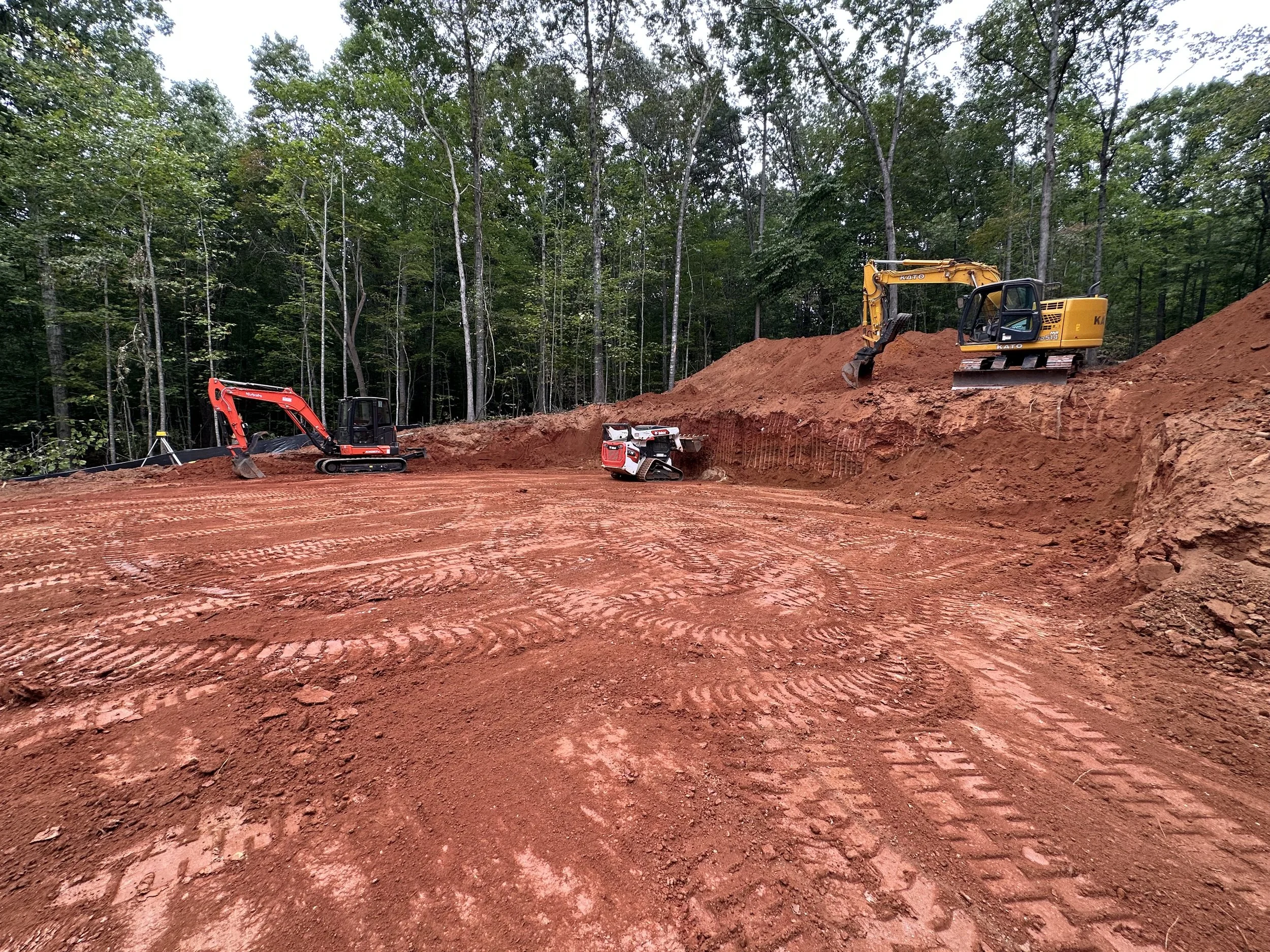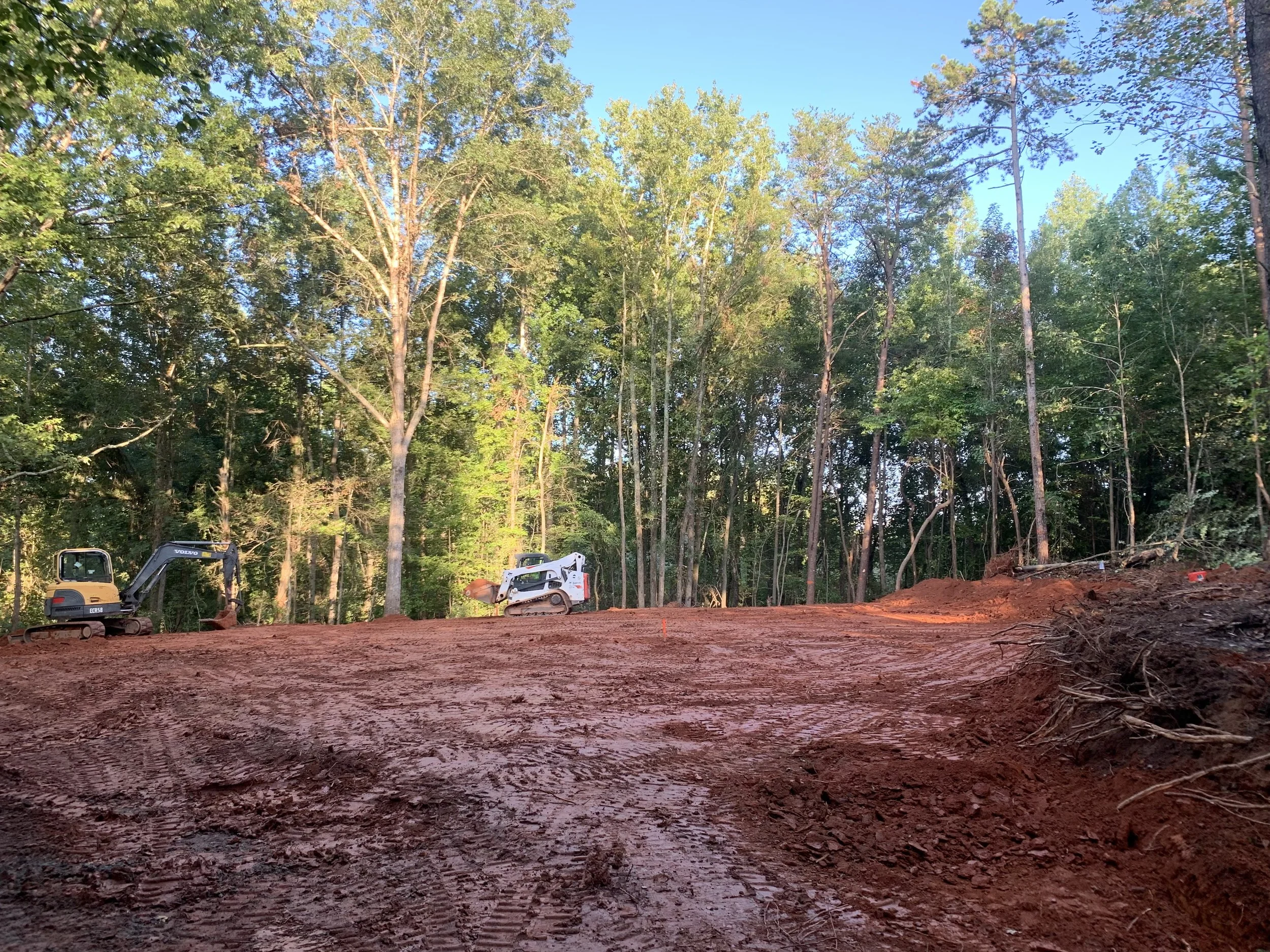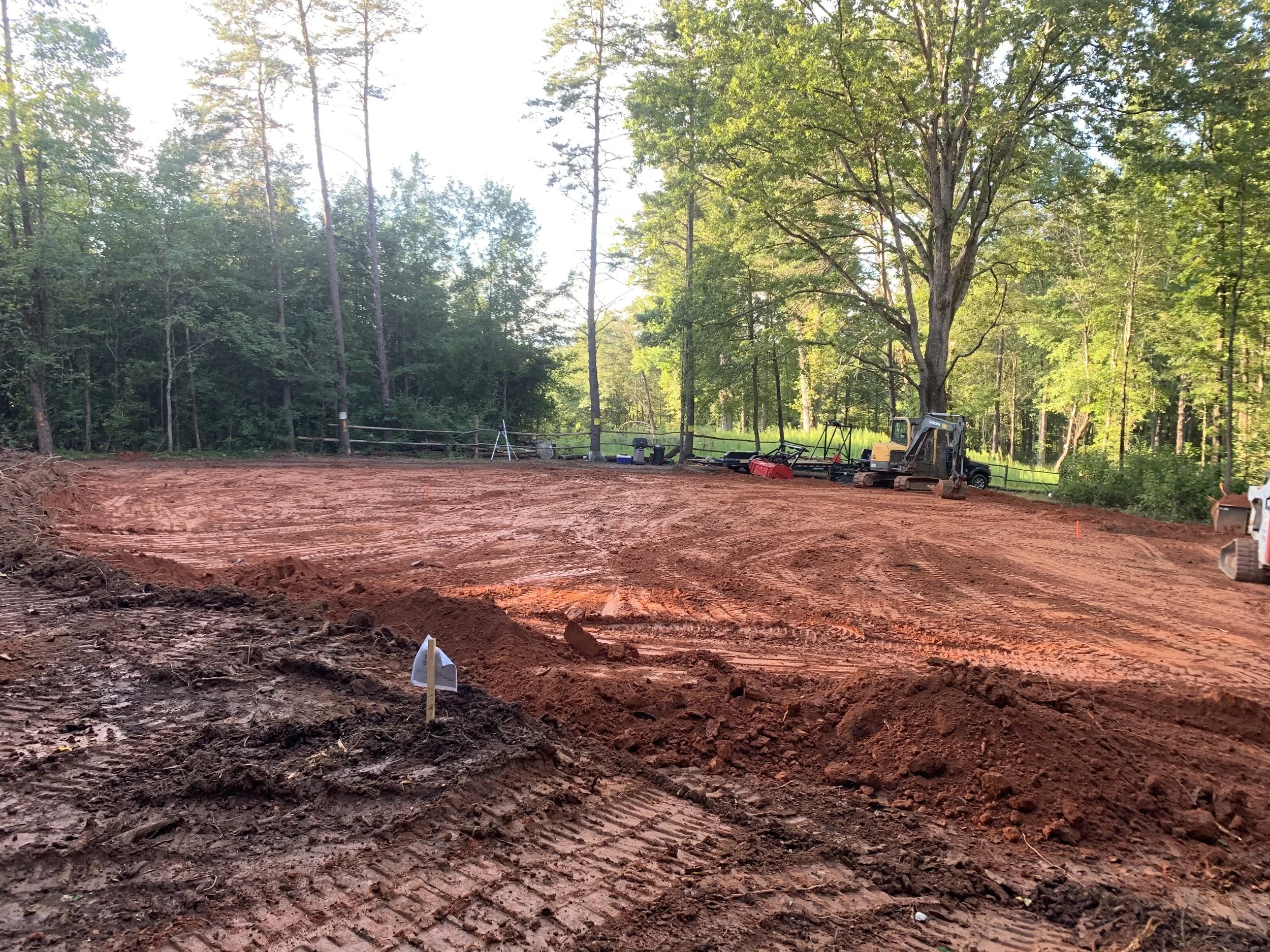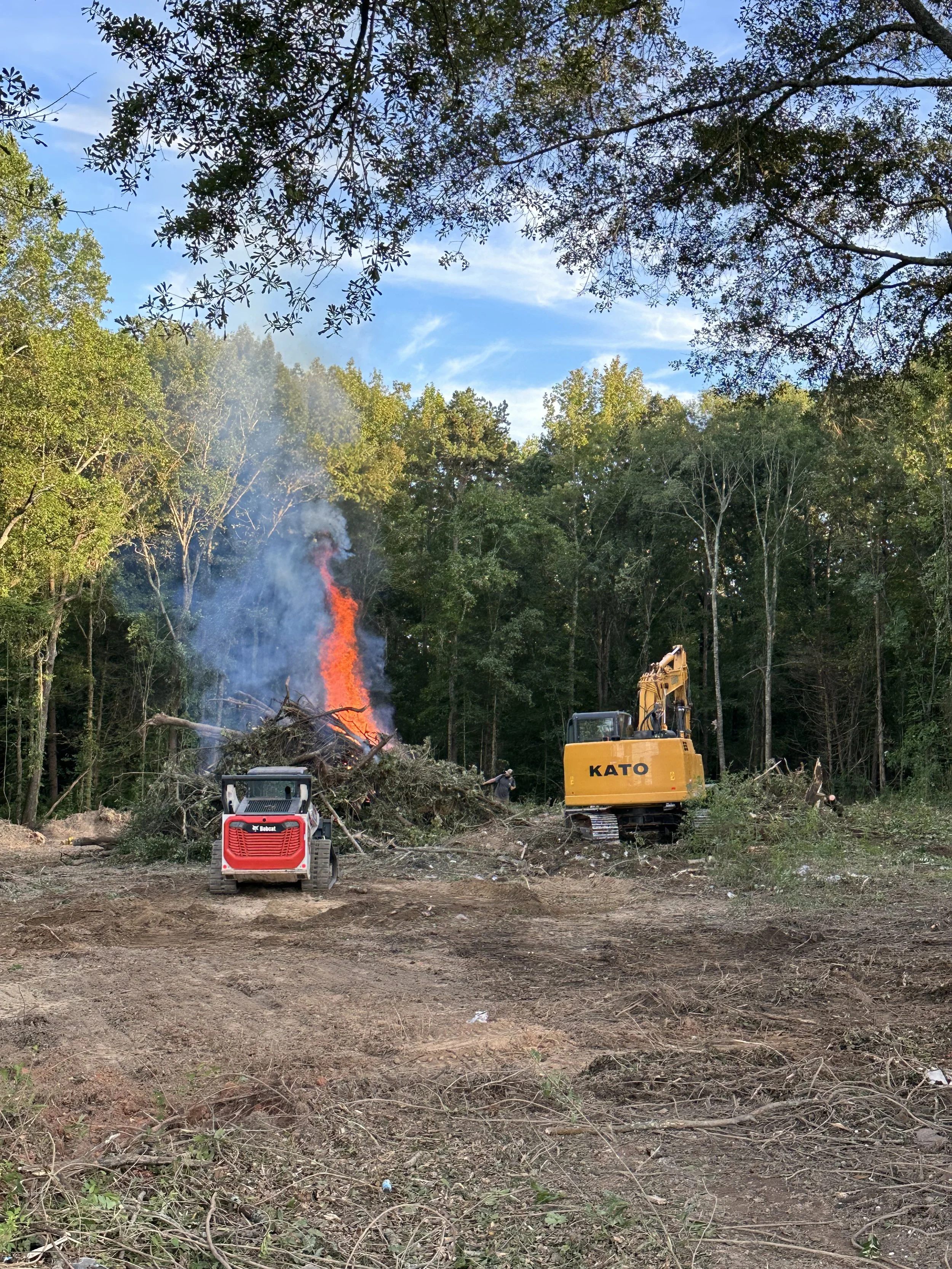Land Clearing & Grading
Land Clearing & Grading – The Process
Land clearing and grading is the first step in preparing a property for construction, landscaping, or simply reclaiming overgrown land. The process begins with clearing, where trees, brush, stumps, and debris are removed to open up the space.
After the land is cleared, grading takes place. Grading reshapes and levels the ground to create a smooth, stable surface while ensuring proper water drainage. This step prevents flooding, controls erosion, and provides a safe foundation for future projects such as homes, driveways, or outdoor living areas.
Factors in Land Clearing
Density of Vegetation: Thick brush, heavy undergrowth, or mature trees require more time and larger equipment.
Accessibility: Narrow entrances, nearby structures, or utility lines can limit equipment access and require more careful work.
Stump & Root Systems: Deep or widespread root systems can be labor-intensive to remove.
Soil Type & Moisture: Wet, clay-heavy, or unstable soil can slow down grading and affect compaction.
Terrain Conditions: Steep slopes, uneven ground, or rocky soil make clearing and grading more difficult.
Debris Removal Needs: Whether material can be mulched on-site or hauled away changes the time and cost involved.
-
The cost can vary depending on a few key factors. The biggest one is the size of the area you’d like cleared — larger spaces naturally require more time and equipment. The type and density of vegetation also play a role, since clearing thick brush or large trees takes more work than light growth. Terrain conditions are another factor; rocky ground, steep slopes, or wet soil can make the job more challenging. Accessibility is also important — if equipment can easily reach the area, it keeps costs lower, but tight or obstructed spaces may take more time.
-
We can haul away brush, logs, and material using dump trucks or trailers for proper disposal or in some cases a chipper. Also, when permitted and practical, we can burn brush on-site in a controlled and safe manner. Both methods ensure that unwanted debris is managed efficiently, leaving your land cleared, tidy, and prepared for its next use.





